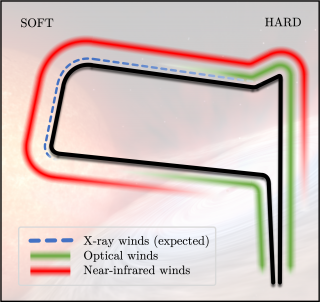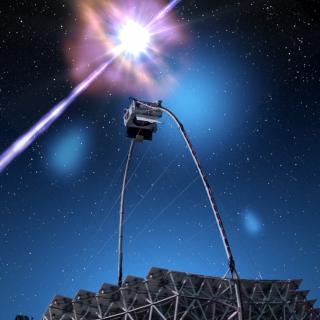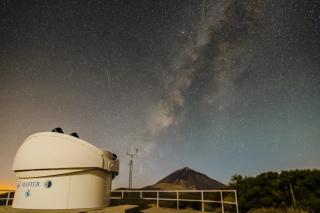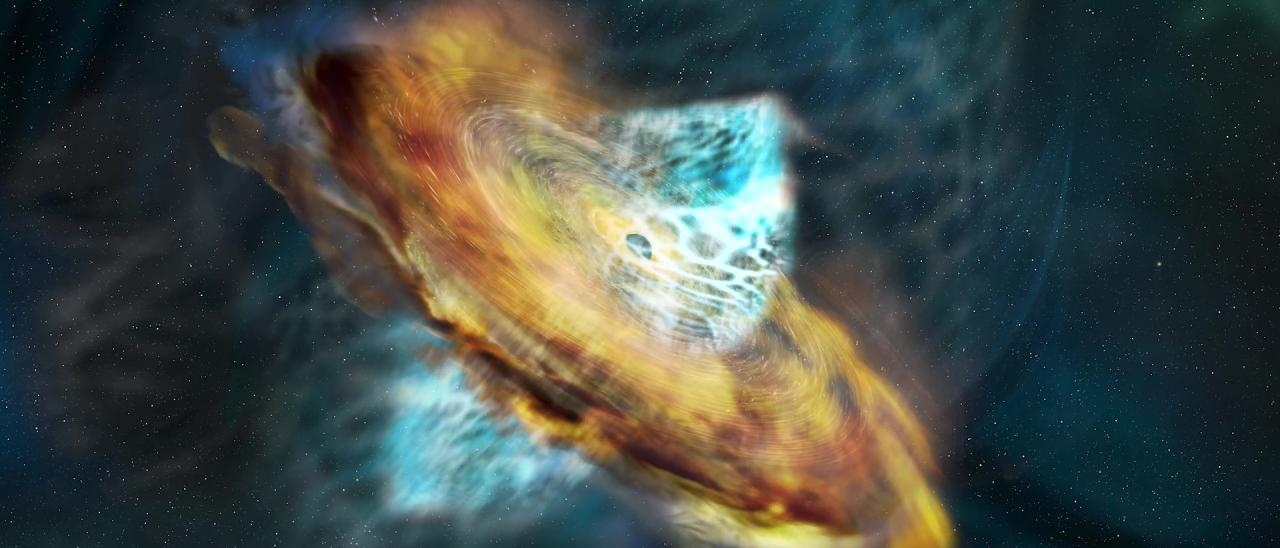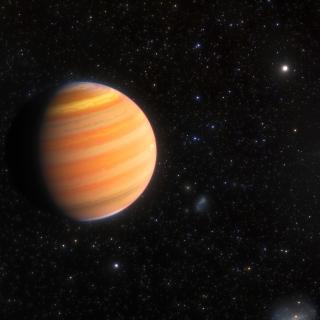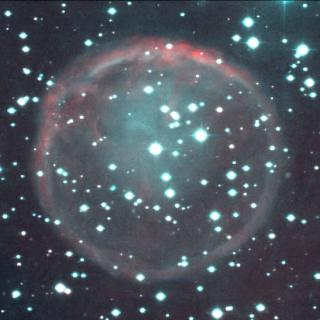An international research, in which a team from the Instituto de Astrofísica de Canarias (IAC) has participated, has provided new evidence for an enigmatic outburst from a galaxy 216 million light-years away, proposing a new interpretation based on a spontaneous flip of the magnetic field surrounding its central black hole. The study has used joint data from different satellites and telescopes, including the Telescopio Nazionale Galileo (TNG) and the Gran Telescopio Canarias (GTC), both located at the Roque de los Muchachos Observatory (Garafía, La Palma). The results will be published in the coming days in The Astrophysical Journal.
In early March 2018, the All-Sky Automated Survey for Supernovae alerted astronomers that a galaxy called 1ES 1927+654 had brightened by nearly 100 times in visible light. A search for earlier detections by the NASA-funded Asteroid Terrestrial-impact Last Alert System showed that the eruption had begun months earlier, at the end of 2017. Three months after the discovery the X-ray emission from the galaxy disappeared.
“Rapid changes in visible and ultraviolet light have been seen in a few dozen galaxies similar to this one,” says Sibasish Laha, a research scientist at the University of Maryland and NASA’s Goddard Space Flight Center in the United States. “But this event marks the first time we’ve seen X-rays dropping out completely while the other wavelengths brighten.”
“An earlier interpretation of the eruption suggested that it was triggered by a star that passed so close to the black hole it was torn apart, disrupting the flow of gas,” says Josefa Becerra, researcher at the IAC and co-author of the article. “However, such an event would fade out more rapidly than this outburst.”
The research team analyzed new and archival observations across the spectrum. NASA’s Neil Gehrels Swift Observatory and ESA’s (European Space Agency) XMM-Newton satellite provided UV and X-ray measurements. Visible light observations came from the Telescopio Nazionale Galileo (TNG) and the Gran Telescopio Canarias (GTC or Grantecan), both located at the Roque de los Muchachos Observatory on the island of La Palma. Radio measurements were acquired from the Very Long Baseline Array, a network of 10 radio telescopes located across the United States; the Very Large Array in New Mexico; and the European VLBI Network.
"The high quality of the GTC/OSIRIS spectrum allows us to disentangle the stellar contribution from that of the active core," says José Acosta, IAC researcher and co-author of the paper. "The stellar population of the host galaxy is dominated by young stars and the nuclear spectrum is dominated by strong emission lines," he says.
Most big galaxies, including our own Milky Way, host a supermassive black hole weighing millions to billions of times the Sun's mass. When matter falls toward one, it first collects into a vast, flattened structure called an accretion disk. As the material slowly swirls inward, it heats up and emits visible, UV, and lower-energy X-ray light. Near the black hole, a cloud of extremely hot particles – called the corona – produces higher-energy X-rays. The brightness of these emissions depends on how much material streams toward the black hole.
The unique disappearance of the X-ray emission provides astronomers with an important clue. They suspect the black hole’s magnetic field creates and sustains the corona, so any magnetic change could impact its X-ray properties. “A magnetic reversal, where the north pole becomes south and vice versa, seems to best fit the observations,” says co-author Mitchell Begelman, a professor in the department of astrophysical and planetary sciences at the University of Colorado Boulder who developed the model. “The field initially weakens at the outskirts of the accretion disk, leading to greater heating and brightening in visible and UV light,” he explains.
As the flip progresses, the field becomes so weak that it can no longer support the corona and the X-ray emission vanishes. The magnetic field then gradually strengthens in its new orientation. In Oct 2018, about 3-4 months after they disappeared, the X-rays came back, indicating that the corona had been fully restored.
Magnetic reversals are likely to be common events in the cosmos. The geologic record shows that Earth’s field flips unpredictably, averaging a few reversals every million years in the recent past. The Sun, by contrast, undergoes a magnetic reversal as part of its normal cycle of activity, switching north and south poles roughly every 11 years.
Article: Sibasish Laha et al: "A radio, optical, UV and X-ray view of the enigmatic changing look Active Galactic Nucleus 1ES 1927+654 from its pre- to post-flare states”, The Astrophysical Journal, 2022 May.
arXiv: https://ui.adsabs.harvard.edu/abs/2022arXiv220307446L/abstract
Video (English version): https://youtu.be/cHmXuo39qz4
Contact at the IAC:
José Acosta, jose.acosta [at] iac.es (jose[dot]acosta[at]iac[dot]es)
Josefa Becerra, josefa.becerra.gonzalez [at] iac.es (josefa[dot]becerra[dot]gonzalez[at]iac[dot]es)
